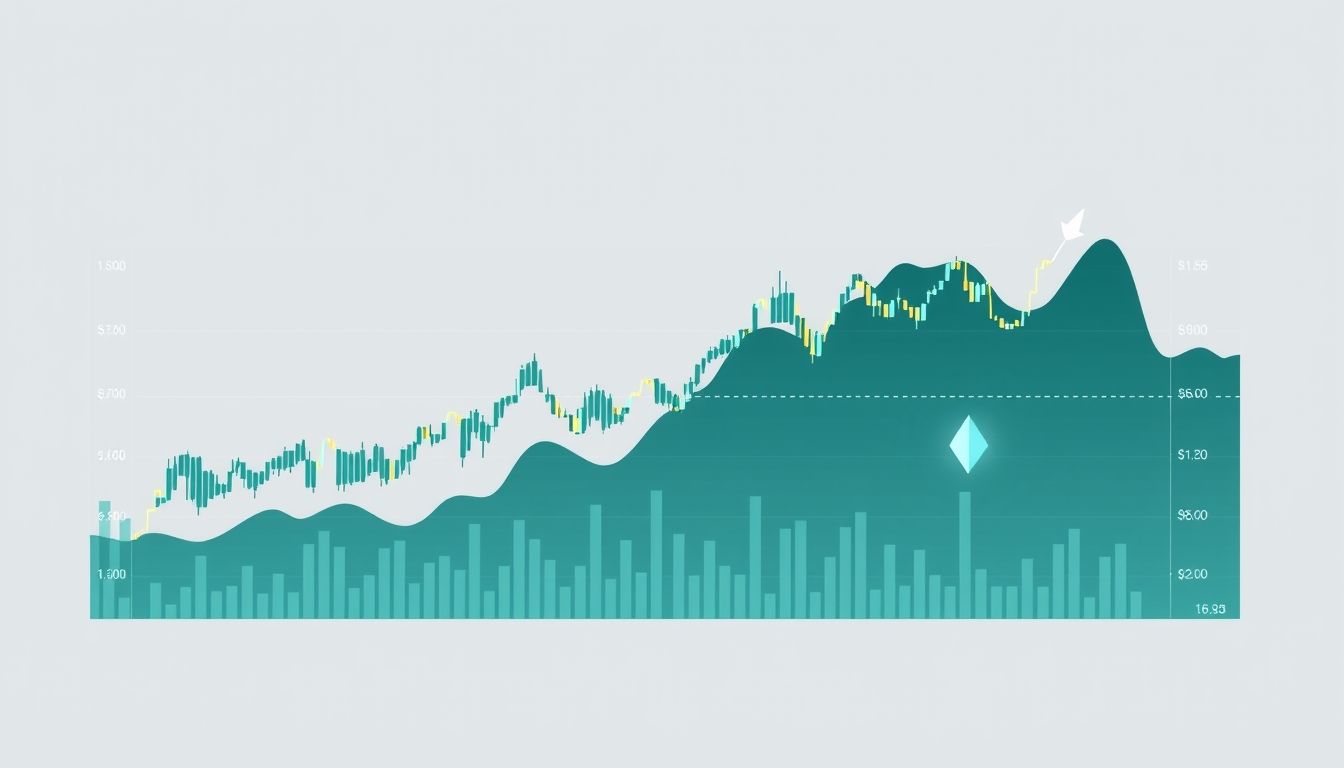Introduction to Bollinger Bands
Bollinger Bands are a popular technical analysis tool used to identify overbought and oversold levels in financial markets. Developed by John Bollinger in the 1980s, they consist of three main lines:
- Middle Band: Typically a 20-day simple moving average (SMA).
- Upper Band: Middle Band + (2 * Standard Deviation) for the same period.
- Lower Band: Middle Band - (2 * Standard Deviation) for the same period.
Bollinger Bands are a dynamic tool that adapts to market volatility, making them useful in identifying potential entry and exit points.
Chapter 1: Understanding the Basics of Bollinger Bands
1.1. Components of Bollinger Bands
Bollinger Bands consist of three lines as mentioned. The middle band represents the average price, while the upper and lower bands represent the expected range of volatility. The higher the volatility, the wider the range between the bands, and vice versa.
Example: Suppose that Saudi Aramco stock is currently trading at 35 riyals. If the middle band of the Bollinger Bands is at 34 riyals, the upper band at 36 riyals, and the lower band at 32 riyals, this indicates that the price is moving within a normal range of volatility.
1.2. Calculating Bollinger Bands
Bollinger Bands are calculated using the following formulas:
- Middle Band (MA): MA = Σ (Closing Price for Period n) / n
- Standard Deviation (σ): σ = √(Σ (Closing Price - MA)² / n)
- Upper Band: Middle Band + (2 * σ)
- Lower Band: Middle Band - (2 * σ)
Where 'n' is the period used in the calculation (typically 20 days).
Chapter 2: Bollinger Squeeze Strategy
2.1. Definition of Bollinger Squeeze
The Bollinger Squeeze occurs when the upper and lower bands converge significantly, indicating a period of low volatility. This period is often followed by an explosion in volatility, providing trading opportunities.
2.2. How to Identify the Bollinger Squeeze
The Bollinger Squeeze can be identified simply by monitoring the distance between the upper and lower bands. When the distance is unusually narrow compared to previous periods, this indicates a potential squeeze.
2.3. Trading Strategies Using the Bollinger Squeeze
When a Bollinger Squeeze occurs, traders can prepare to enter a trade when the price starts to move outside one of the bands (upper or lower). If the price breaks the upper band, it may be a buy signal. And if the price breaks the lower band, it may be a sell signal.
Example: If you notice that a particular stock is going through a Bollinger Squeeze period, and you wait until the price breaks the upper band, you can enter a buy trade with the aim of making a profit when the price rises. You should also place a stop-loss order to protect capital in case the price reverses.
Chapter 3: Bollinger Bands Walk Strategy
3.1. Definition of Bollinger Bands Walk
A Bollinger Bands Walk occurs when the price consistently moves along the upper or lower band of the Bollinger Bands. A walk on the upper band indicates a strong uptrend, while a walk on the lower band indicates a strong downtrend.
3.2. How to Identify the Bollinger Bands Walk
The Bollinger Bands Walk can be identified by monitoring the price movement relative to the upper and lower bands. If the price touches or moves near the upper band for a long time, this indicates a walk on the upper band. The opposite is true for a walk on the lower band.
3.3. Trading Strategies Using the Bollinger Bands Walk
When a walk on the upper band occurs, traders can look for opportunities to enter buy trades, with stop-loss orders placed near the middle band or the lower band. When a walk on the lower band occurs, traders can look for opportunities to enter sell trades, with stop-loss orders placed near the middle band or the upper band.
Example: If you notice that the price of a cryptocurrency such as Bitcoin is constantly moving along the upper band of the Bollinger Bands, you can enter a buy trade with the expectation that the uptrend will continue. However, you should be careful and place a stop-loss order to protect capital in the event of a price correction.
Chapter 4: Using Bollinger Bands with Other Indicators
4.1. Combining Bollinger Bands with the Relative Strength Index (RSI)
Bollinger Bands can be combined with the Relative Strength Index (RSI) to improve signal accuracy. For example, if the price touches the upper band of the Bollinger Bands and the RSI indicates an overbought zone (above 70), this may be a potential sell signal.
4.2. Combining Bollinger Bands with the MACD
Bollinger Bands can also be combined with the MACD. If the price breaks the lower band of the Bollinger Bands and the MACD indicates a bearish crossover, this may be a strong sell signal.
4.3. Combining Bollinger Bands with Japanese Candlestick Patterns
Bollinger Bands can be combined with Japanese candlestick patterns to confirm signals. For example, if a bullish reversal candlestick pattern (such as a hammer) appears near the lower band of the Bollinger Bands, this may be a strong buy signal.
Chapter 5: Risk Management in Bollinger Bands Trading
5.1. Placing Stop-Loss Orders
Traders should always place stop-loss orders to protect capital. Stop-loss orders can be placed near the middle band or the lower band in buy trades, and near the middle band or the upper band in sell trades.
5.2. Determining Position Size
Position size should be determined based on risk tolerance and available capital. No more than 1-2% of capital should be risked on any single trade.
5.3. Portfolio Diversification
The portfolio should be diversified to reduce risk. You should not rely on a single strategy or asset.
Chapter 6: Practical Examples from the Arab Market
6.1. Trading Saudi Stocks Using Bollinger Bands
Bollinger Bands can be used to trade Saudi stocks. For example, Saudi Basic Industries Corporation (SABIC) stock can be analyzed using Bollinger Bands to identify potential entry and exit points.
6.2. Trading Forex in the Gulf Market
Bollinger Bands can be used to trade Forex in the Gulf market. For example, the EUR/USD currency pair can be analyzed using Bollinger Bands to identify trading opportunities.
6.3. Trading Commodities in the UAE Market
Bollinger Bands can be used to trade commodities in the UAE market. For example, the price of gold can be analyzed using Bollinger Bands to identify potential entry and exit points.
Chapter 7: Common Mistakes to Avoid
7.1. Relying on Bollinger Bands Alone
You should not rely on Bollinger Bands alone in making trading decisions. They should be combined with other indicators and Japanese candlestick patterns to improve signal accuracy.
7.2. Ignoring Risk Management
Risk management should not be ignored. Stop-loss orders should always be placed and position size should be determined based on risk tolerance and available capital.
7.3. Emotional Trading
Emotional trading should be avoided. Decisions should be made based on technical and fundamental analysis, not based on fear or greed.
Chapter 8: Advanced Tips in Using Bollinger Bands
8.1. Adjusting Bollinger Bands Settings
Bollinger Bands settings can be adjusted to suit the market and the specific asset. For example, the period used to calculate the moving average and standard deviation can be changed.
8.2. Using Bollinger Bands in Different Timeframes
Bollinger Bands can be used in different timeframes. The daily, weekly, and monthly charts can be analyzed to identify long-term trends and potential entry and exit points.
8.3. Combining Bollinger Bands with Other Strategies
Bollinger Bands can be combined with other trading strategies, such as breakout strategy and rebound strategy.
Chapter 9: The Future of Bollinger Bands in Trading
Despite the emergence of new technical analysis tools, the Bollinger Bands indicator remains a powerful and effective tool in identifying trading opportunities. As financial markets evolve, traders will continue to use Bollinger Bands and develop new strategies to maximize the benefits of this indicator.
Chapter 10: Conclusion
Bollinger Bands are a valuable technical analysis tool that can be used to identify trading opportunities in financial markets. By understanding the basics of Bollinger Bands, applying different trading strategies, and managing risk effectively, traders can achieve sustainable profits in financial markets.
Disclaimer: This article is for educational purposes only and does not constitute investment advice. Traders should consult a financial advisor before making any investment decisions.



